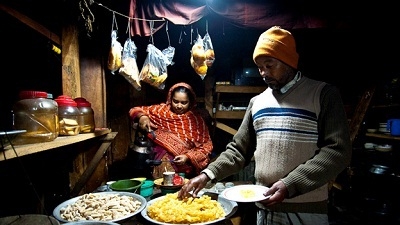Challenge
Only about 40 percent of the rural households in Bangladesh have access to grid electricity. For the rest of the areas not connected to the grid, life almost comes to a standstill after sunset. Even for those connected to the grid, power generation capacity constraints due to lack of generation capacity, and fluctuations in demand result in frequent power-cuts. Reliance on grid electricity alone will not allow the government of Bangladesh to realize its vision of universal access to electricity by the year 2020, mainly due to geographic and access limitations. Furthermore, the dispersed nature of rural settlements and the numerous rivers that crisscross the country make grid electrification in many areas difficult and expensive. In areas not connected to the grid, solar power is the most viable and sustainable way to provide power.
Solution
The Rural Electrification and Renewable Energy Development Project (RERED) supports Bangladesh's efforts to increase access to electricity in rural areas of Bangladesh through both grid and off-grid options. The off-grid option promotes renewable energy sources to provide electricity to remote, hard-to-reach villages where grid electricity is not feasible.
Specifically, the project makes Solar Home Systems (SHS) available to households through a network of nongovernmental organizations (NGOs) under a microcredit scheme. Under the program, partner organizations (POs), mostly NGOs, procure and install the systems in rural households as per the Infrastructure Development Company Limited (IDCOL) technical standards. Households pay a 10 percent down payment while 90 percent is repaid during a three to five year credit period at market interest rates. After the systems are installed, the POs apply for refinancing from IDCOL (at a lower interest rate and for a longer repayment period). After technical and other verifications, IDCOL releases the credit and a fixed subsidy (currently $25 per system) to the POs. This refinancing provides the POs with funds to install more systems. In addition to providing IDA financing for the refinancing scheme, the World Bank has also made available subsidy amounts, initially from the Global Environment Facility (GEF), and recently from the Global Partnership on Output-Based Aid (GPOBA). The project has also piloted renewable energy-based mini-grids in remote rural areas and solar irrigation pumps.
Results
In 2002, only 7,000 Bangladeshi households were using solar panels. Today, about 2 million low-income rural households in Bangladesh have electricity delivered by solar power.
Since 2009, more than 50,000 solar home systems have been installed every month in Bangladesh, making it the fastest growing solar home system program in the world. Initially starting as a grid electrification project, about 650,000 new grid connections were also supported under the project. The project also supported deployment of 10 million energy efficient compact fluorescent lamps (CFLs) in exchange for incandescent lamps.
- About 2 million remote households and rural shops have been provided with solar home systems since 2002.
- Every month, 50,000 solar home systems are being installed.
- 650,000 new consumers have been connected to the grid since 2009.
- Access to electricity is changing people's lives and transforming villages into thriving centers by allowing children to do homework and businesses to be open at night.
- Since inception in 2009, the project contributed to increasing access to electricity in Bangladesh by 3.5 percent.



